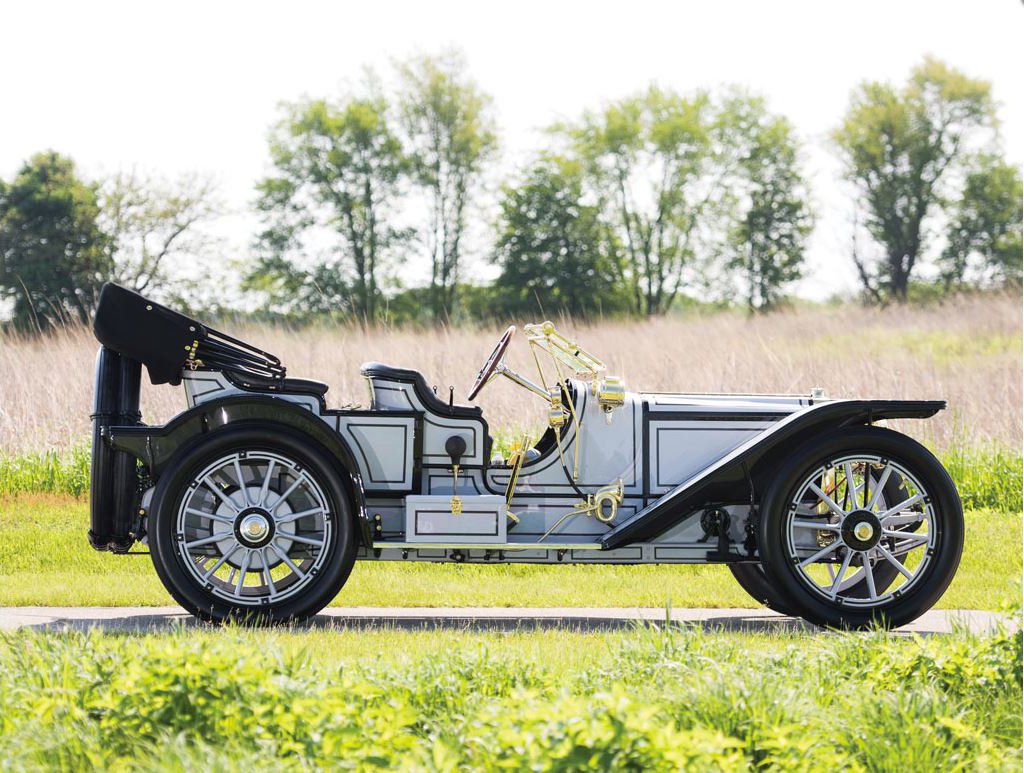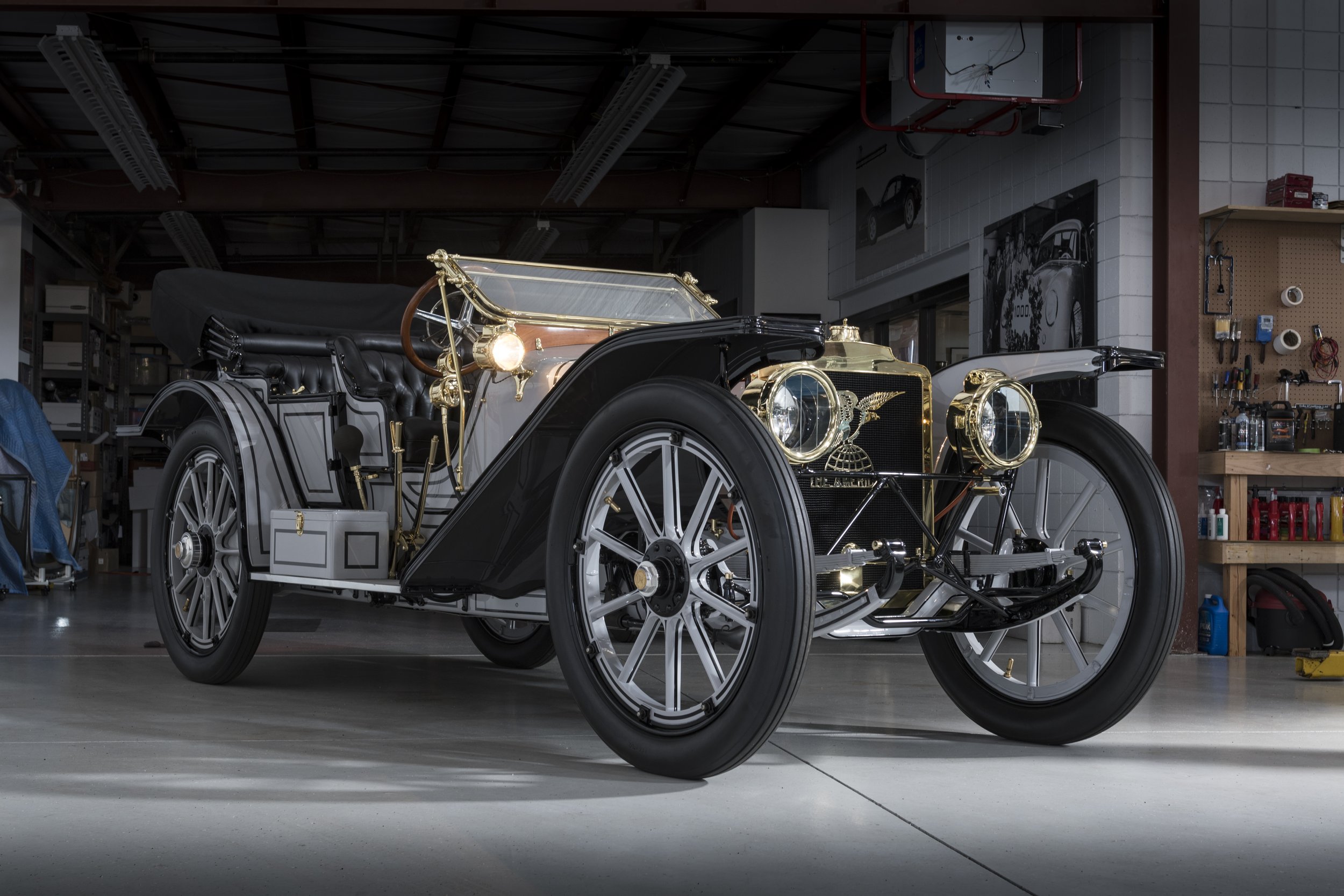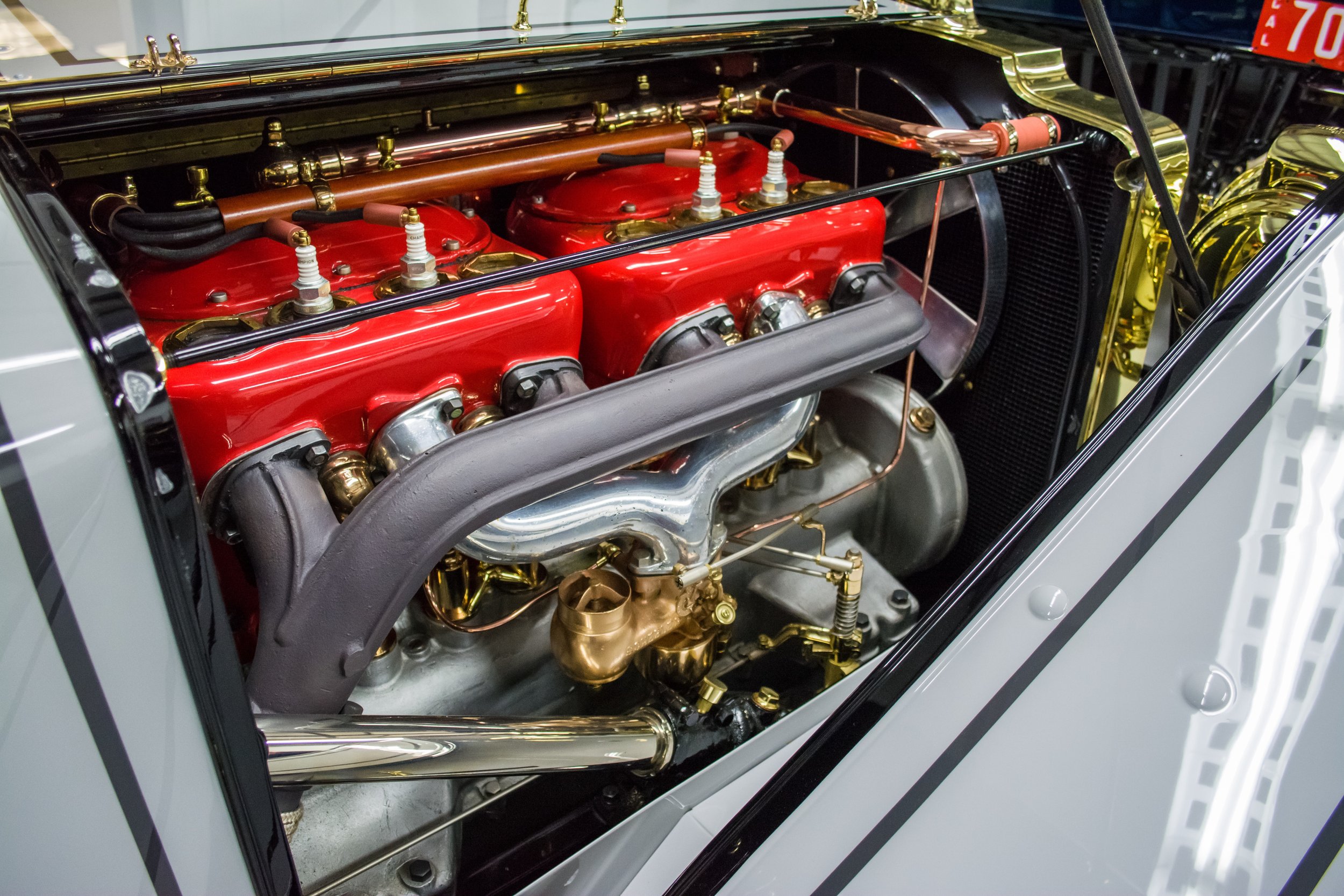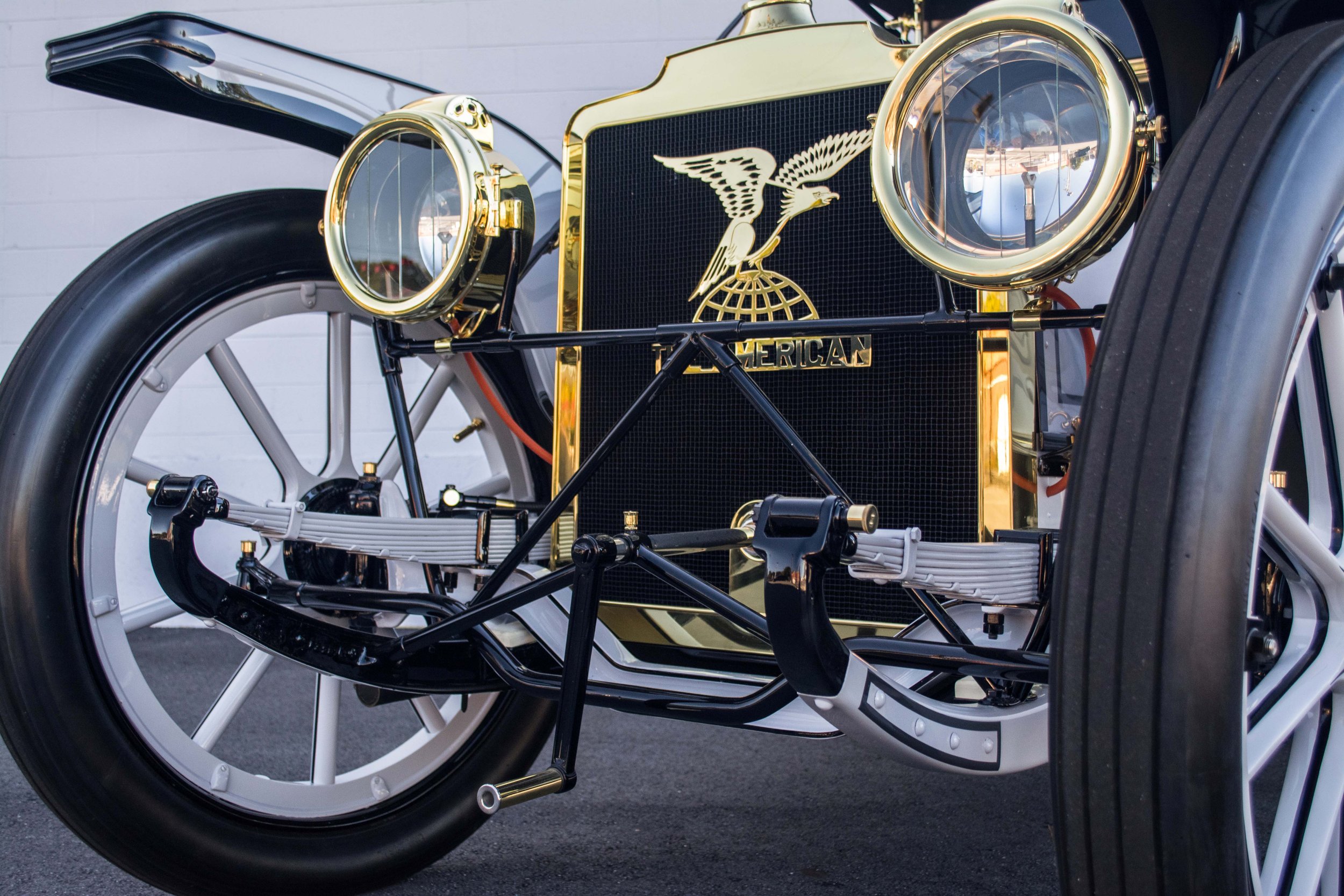1910 American Underslung Traveler
Featured an advanced “UnderSlung” chassis design that ran under and dipped between the axles, lowering the car and its center of gravity.
One of the first true sports cars built in the U.S.A, rivaling Mercer and Stutz
Enormous four-cylinder engine provides gobs of torque for off-road use
The American Motor Car Company was founded in 1906. American built the Underslung model from 1907 until 1914, with various engines and in multiple sizes. The four-passenger Traveler is perhaps the most desired form, on account of its dramatic four-passenger Toy Tonneau styling, with close-coupled lines incorporating a snug rear seat for two, which is tucked into the back, along with dual rear-mounted spares. In 1910, the horsepower rating for the engine was increased to 60 by enlarging the cylinder bore and adding pressurized lubrication. In 1911, the company faced financial difficulties. It's name was changed to American Motors Co. In 1912, the entire model line now used the underslung chassis. As a marketing ploy, the vehicles were named the American Underslungs. Due to the size of the Traveler, a larger engine was required to make it more competitive in the marketplace. A six-cylinder engine was used. In 1913, electric starters and lights became available on the Underslungs. The company still was suffering from financial problems. The company was having trouble competing with other manufacturers that were more efficient and produced bigger, faster vehicles at lower prices. Like many other manufacturers during this era, they were plagued by ineffective assembly processes, a tough economy, the onset of World War I, and an evolving marketplace. In November of 1913, the company went into receivership.
A factory-bestowed nickname of sorts, not a model name, it was one of the foremost automobiles built in Indianapolis, in an era when the Crown City was another Midwestern center of motor car production. It is an authentic survivor of Brass Era cars and boasts a four-cylinder engine, three-speed manual transmission, front and rear semi-elliptical leaf-spring suspension, and rear-wheel expanding drum brakes. It featured an advanced chassis design that ran under and dipped between the axles, lowering the car’s body closer to the ground and, therefore, also its center of gravity. Due to achieving such a low ground clearance, 40-inch wheels were needed to give the vehicle ample space between the frame and the ground. Harry C. Stutz, an engineer who would later produce cars under his own name is credited with creating the Underslung design. Although Stutz created the chassis design, it was American's chief engineer, Fred I. Tone, who turned the chassis upside down. Even with the ground clearance advantage, the Underslung was not as competitive as other vehicles that featured larger engines. This was proven in 1908 when American Motor Car entered an Underslung Roadster in the Savannah Challenge Cup Race. The four-cylinder engine was not enough to keep pace and as a result, it finished last, due to the cars poor handling and frequent tire changes.
The American was expensive and worth it: a beautifully constructed performance car that represented the best of American performance at the time. It is fast, boisterous, and proudly American, a supercar of its day! The Underslung models provided safety that many other early manufacturers could not guarantee. The Underslungs were virtually impervious to roll-overs. Sales documentation stated that the vehicles could be tilted up to 55 degrees without rolling over.
This Underslung epitomizes the Brass Era of motoring, with several components equipped in brass from the factory. Brass comprised the most elegant form of automobile customization at the time, allowing owners to make their car unique from the few others on the road at the time. While most automobiles of the era did not travel fast enough to require a speedometer, the Underslung was equipped with a brass Warner speedometer.
This particular Underslung was the 2014 Pebble Beach Concours d’Elegance Best in Class winner, in addition to being previously owned by Walter Seeley, Joel Finn, and Richard King.
Walter Seeley, of Russell, Pennsylvania, is most famous for restoring the Deemer family’s several American automobiles. This Traveler was reportedly the finest, most original American owned by Mr. Seeley, and importantly, a large part of his archives passed with it when the car was sold to another famed enthusiast, Joel Finn.
Mr. Finn eventually passed the car to Richard King, a well-known East Coast enthusiast of Brass Era automobiles. Mr. King brought the car to Brian Joseph’s respected restoration facility, Classic & Exotic Service, of Troy, Michigan, to under go a full Pebble Beach-quality restoration. The American’s body was removed from the chassis, with every piece of the running gear, including the engine, transmission, rear axle, springs, and shackles taken apart individually and restored to original condition. Once the sheet metal was taken off the body, its original wood was revealed. It was in such great condition, only a few small areas needed to be repaired. The restored body was then reupholstered, and, using a collection of large-format factory photographs, the restoration was confirmed to have its original design and execution. It is a remarkable, authentic example of an automobile that was the most elite of its era and proudly American.
Specifications:
Configuration: Longitudinal front engine
Engine: 476.3 C.I. T-head Inline Four-Cylinder
Horsepower: 50 @ 1,200
Transmission: Three-speed Progressive Sliding Pinion, 15-inch Cone Clutch
Top speed: 75 MPH
Weight: 2,750 LBS





